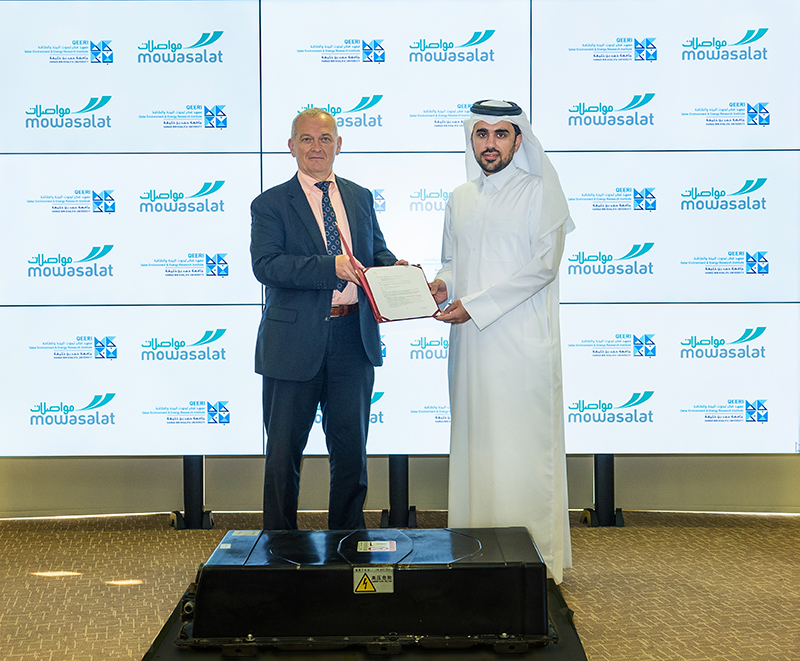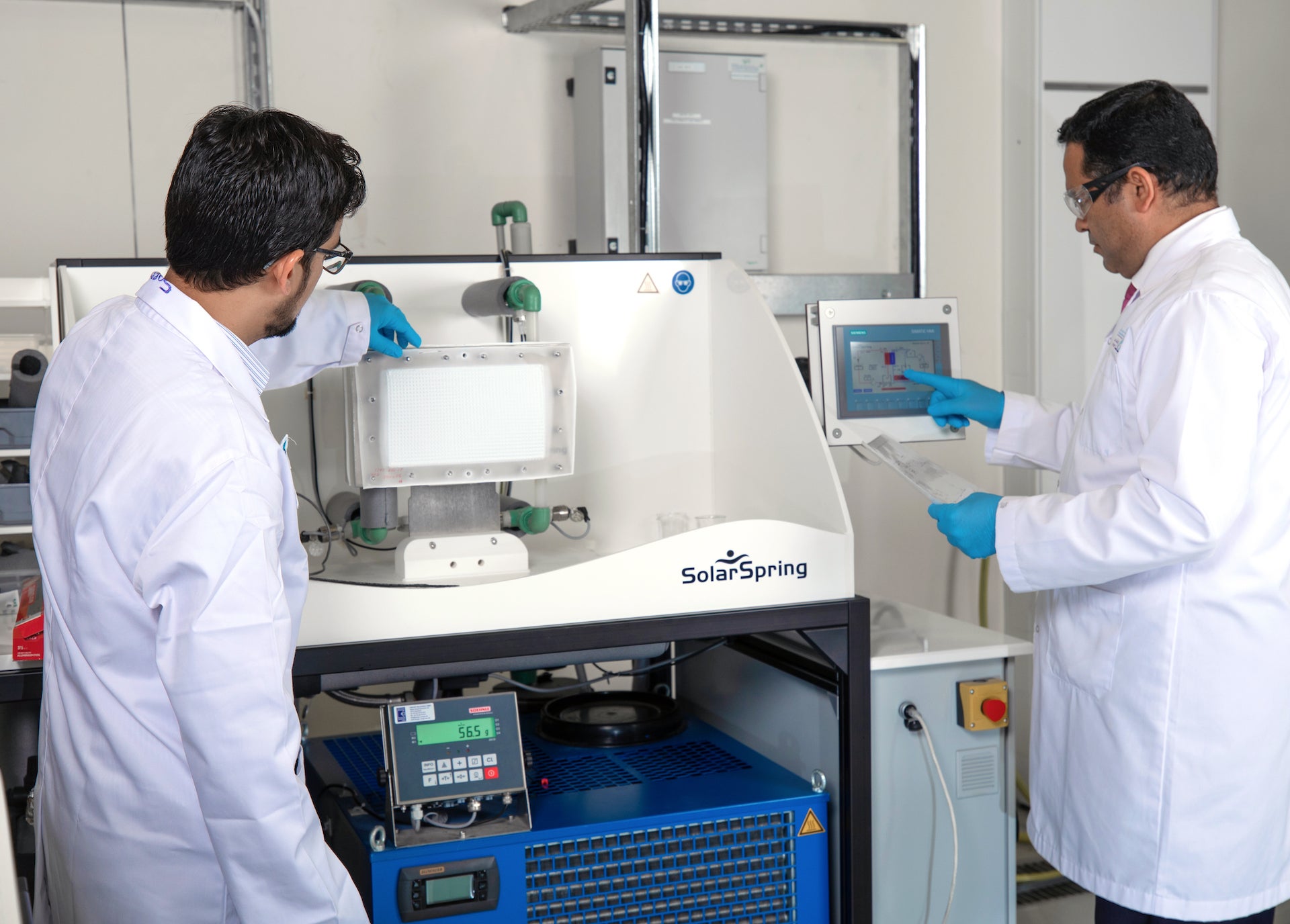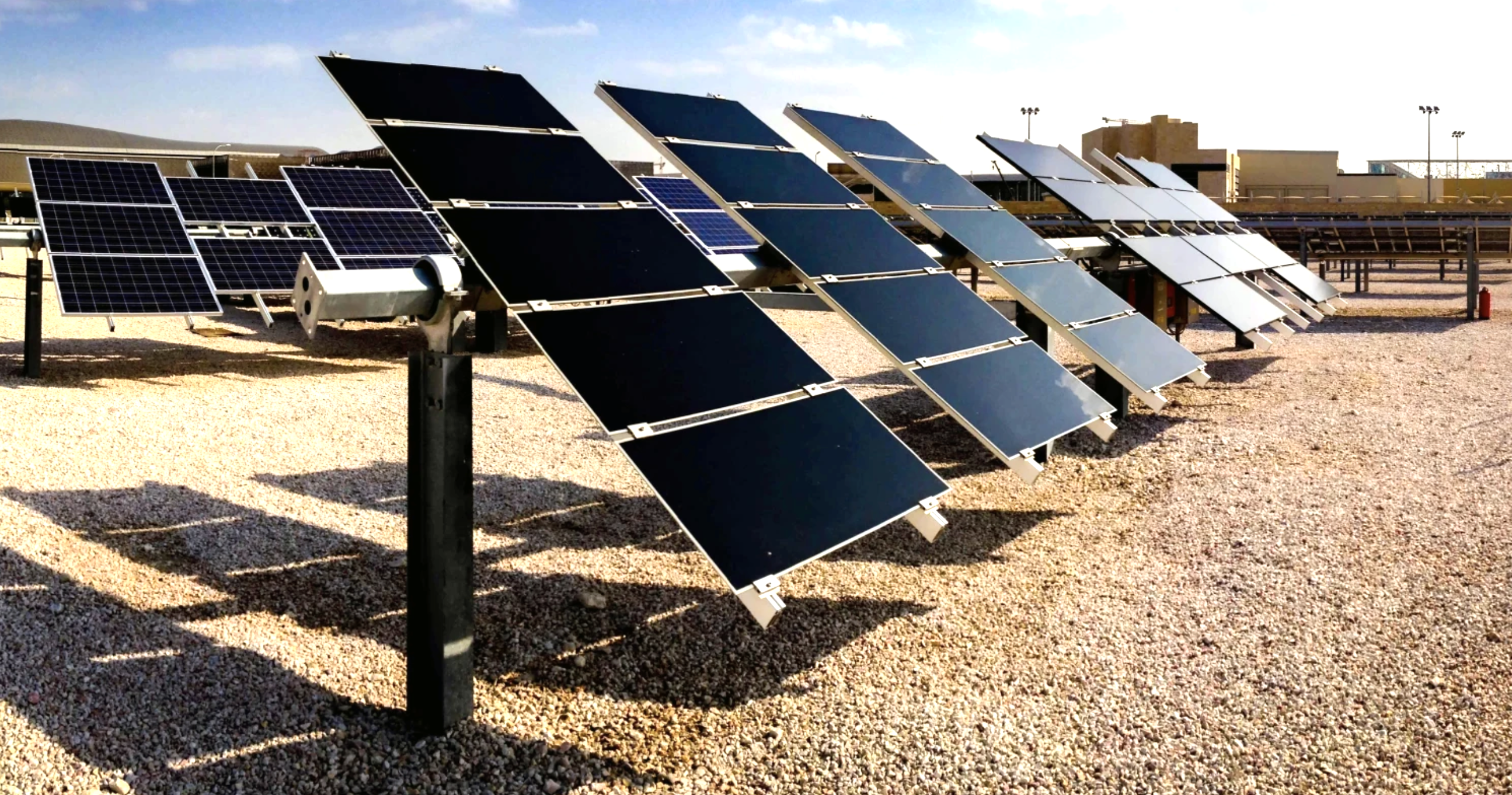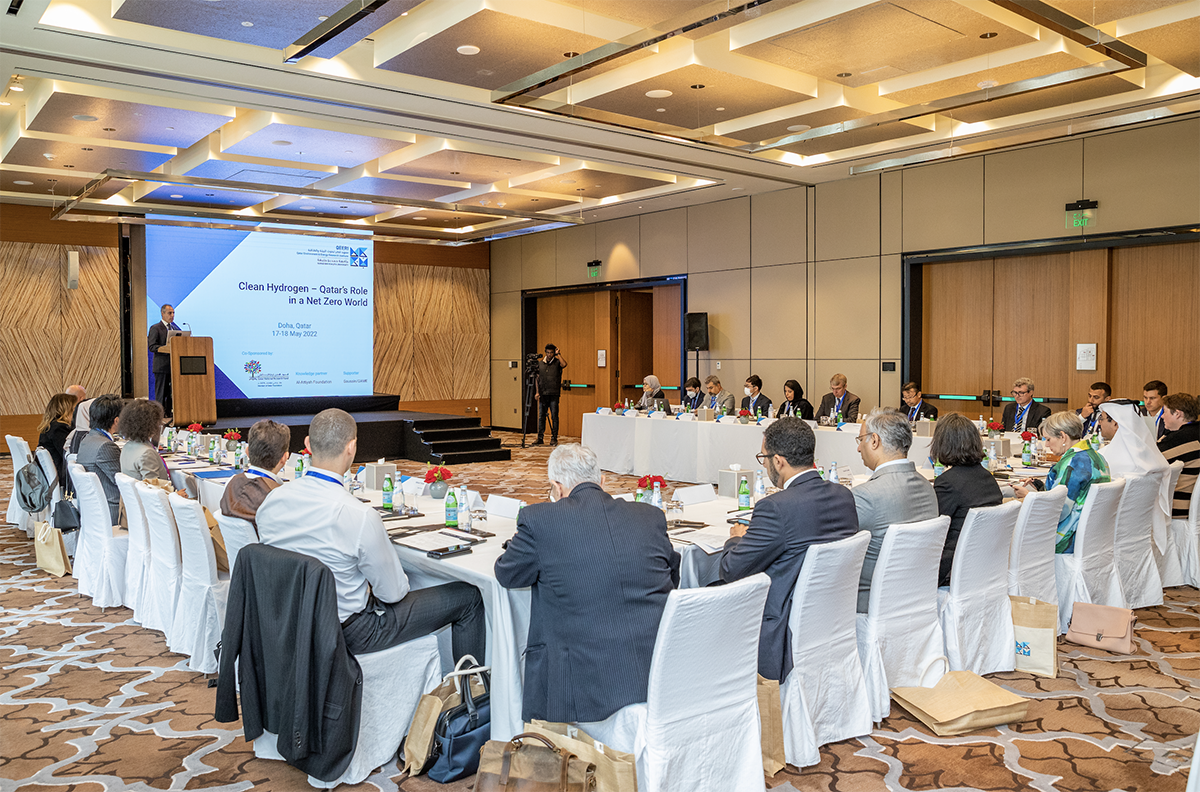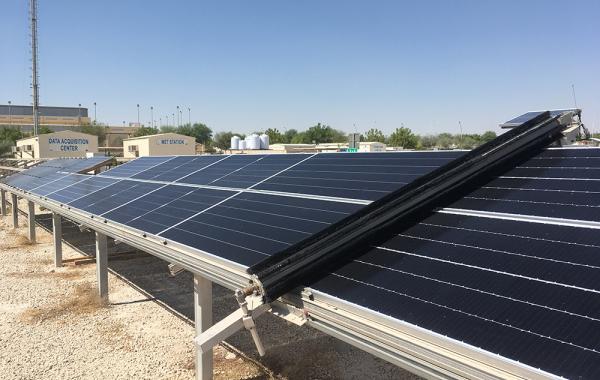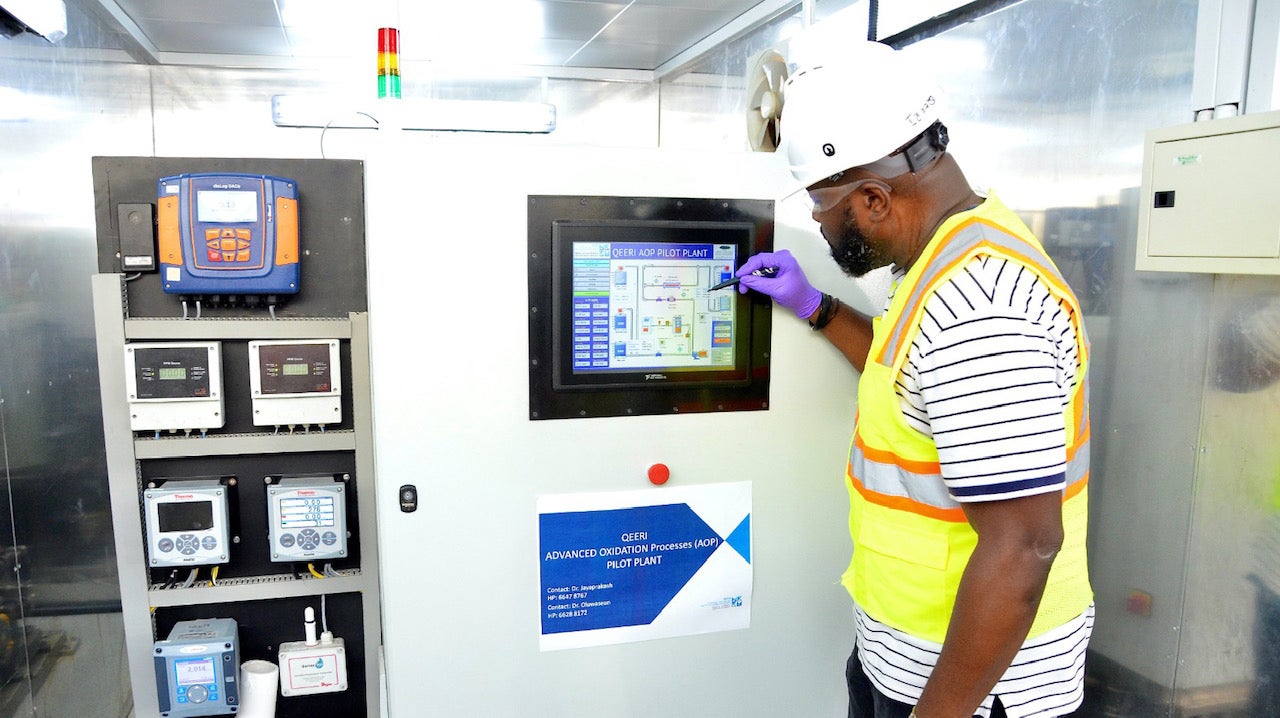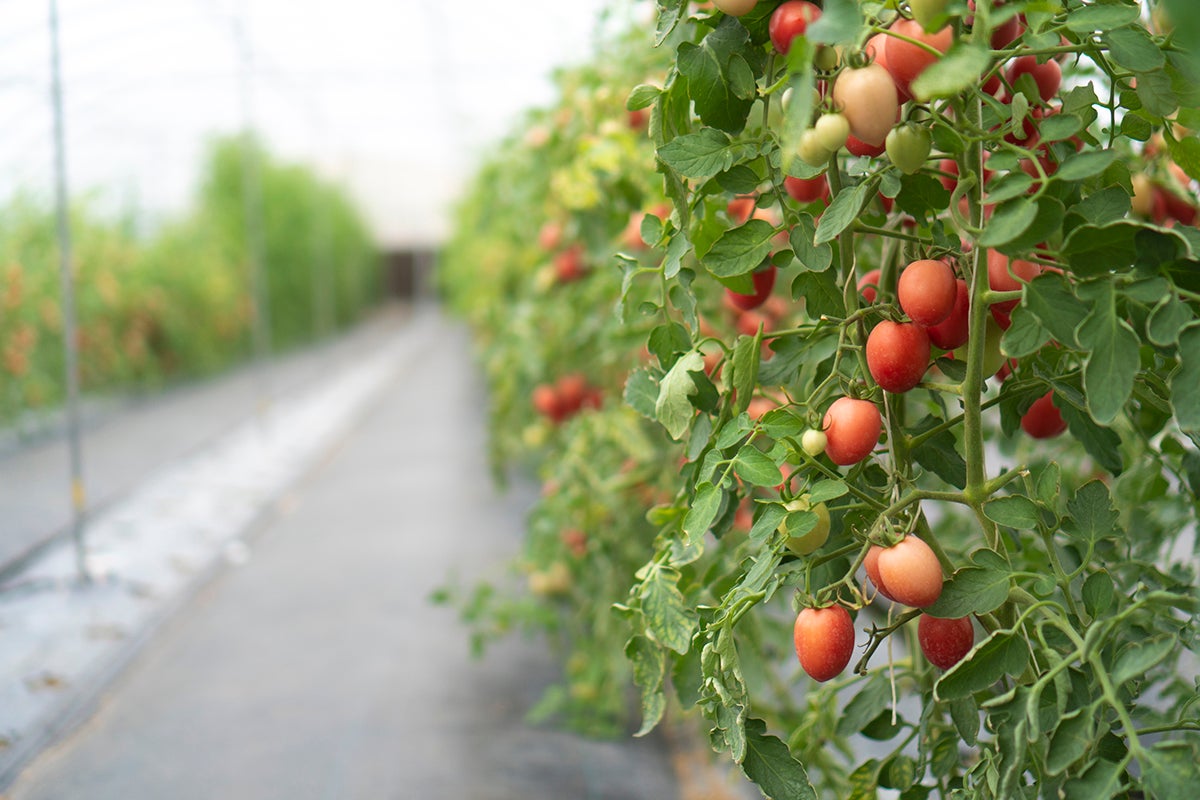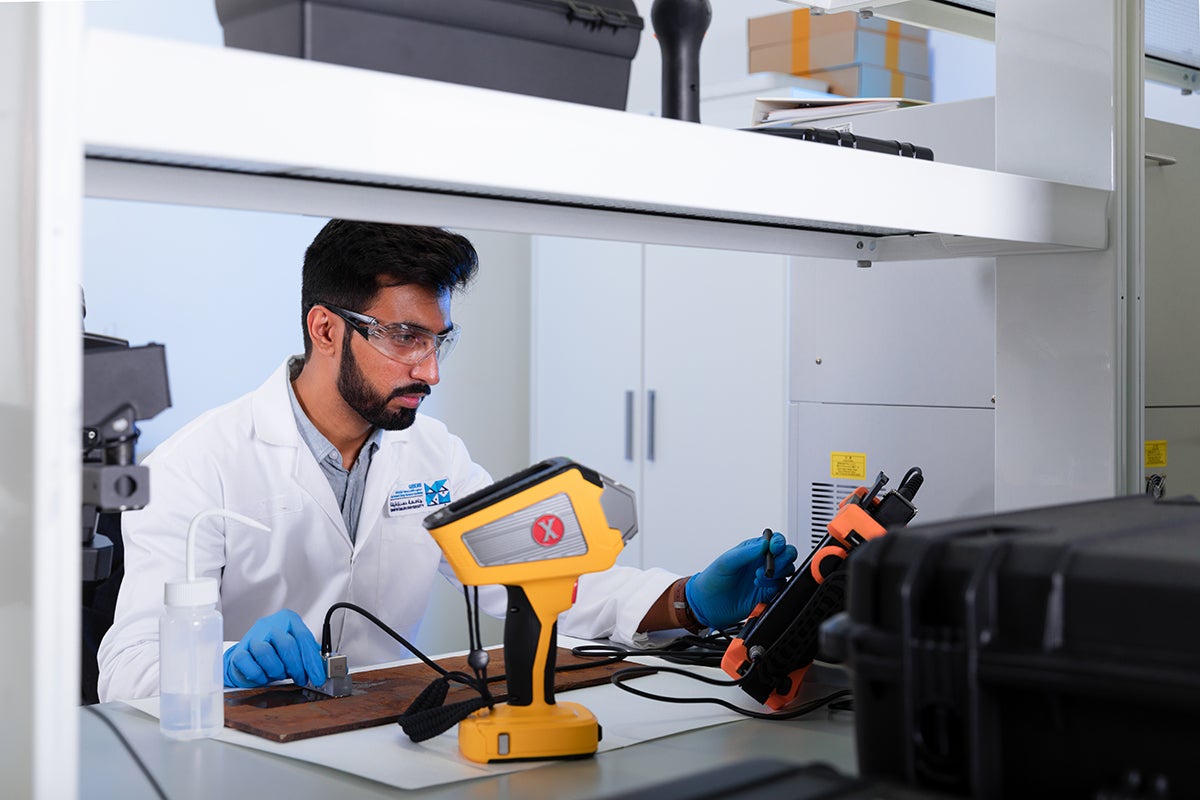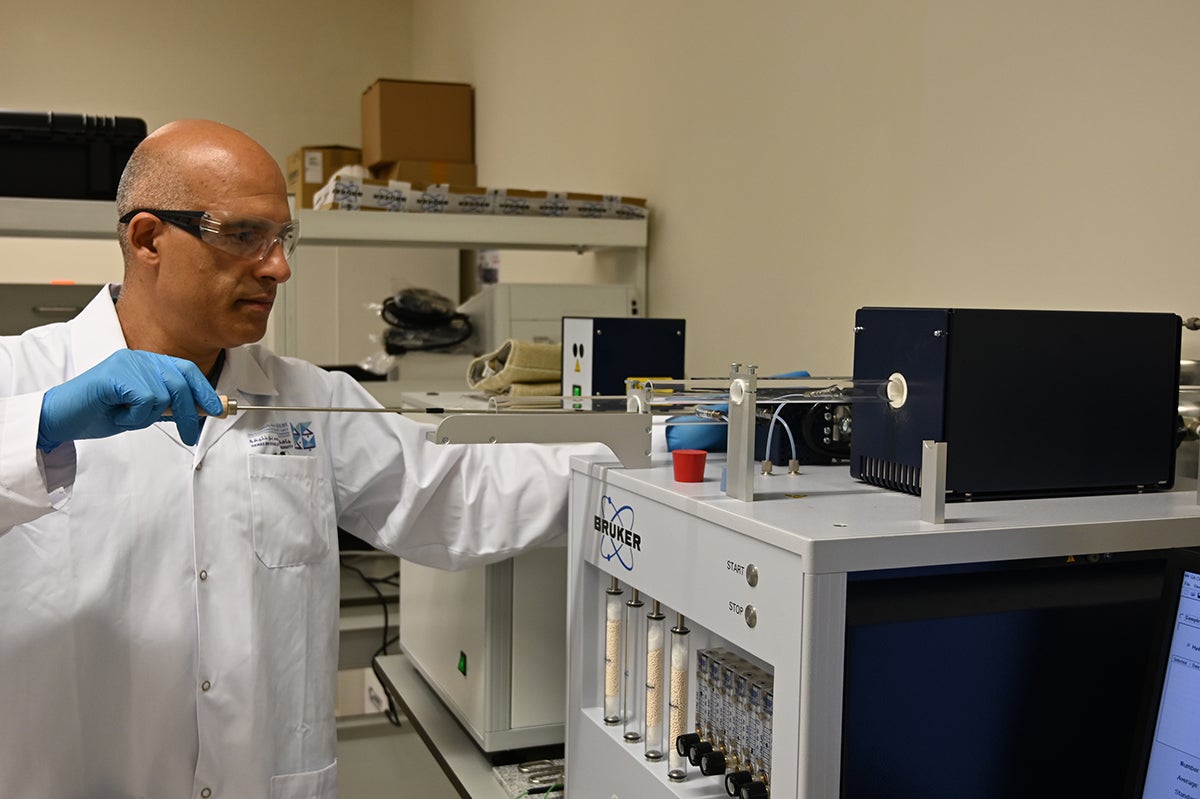
QEERI’s Corrosion Testing to Aid the Hydrogen Energy Transition
Predictive models will help industry overcome corrosion challenges in transition to renewables

Qatar Environment and Energy Research Institute (QEERI), part of Hamad Bin Khalifa University (HBKU), is enhancing its corrosion research capabilities with the commissioning of a new testing facility for examining hydrogen interaction with metals.
Established under QEERI’s Corrosion Center, the facility will contribute to the development of knowledge-based predictive models. These will help Qatar’s major industries cope with the challenges related to materials integrity towards establishing a hydrogen economy.
The new facility enables QEERI scientists to study the effect of hydrogen on material mechanical properties at different length scales, from nanometer to centimeter. Deploying the most advanced techniques makes it possible to measure the hydrogen content and then correlate it with the change in mechanical properties.
Hydrogen is the smallest and most abundant atom in the universe. The atom’s small size makes it easy to ingress metals and move around in the crystal structure of the metal at ambient temperature. This results in hydrogen embrittlement, which is the local enrichment of the hydrogen in the metal microstructure, leading to unexpected cracking and failure of metallic components in contact with hydrogen.
Hydrogen embrittlement, in turn, is creating a bottleneck in the transition from fossil fuels to renewable energy – particularly as the energy ecosystem is evolving, and hydrogen is emerging as an important energy carrier.
“We are currently involved in several projects looking into this challenge, including additively manufactured and 3D-printed alloys for application in conditions where the risk of hydrogen embrittlement is high,” said Dr. Afrooz Barnoush, Principal Scientist at the Corrosion Center and the Material for Hydrogen project leader. “Additive manufacturing provides possibilities to tailor-made microstructure of the metals to make them more resistant to hydrogen embrittlement. However, finding the appropriate microstructure and building strategies to achieve these optimum microstructures requires intensive research work. For this, we are also collaborating with leading industrial players in Qatar, and globally.”
Since its launch in 2019, QEERI’s Corrosion Center has been committed to engaging and working closely with stakeholders in Qatar to determine industry needs and provide technical and research support in the area of corrosion and materials engineering.
Dr. Hanan Farhat, Senior Research Director at the QEERI Corrosion Center, added: “The Center’s approach is to turn every corrosion challenge into a research, development, and innovation project where scientific knowledge along with industrial experience combine to provide customized solutions, and generate more knowledge, science, and technology. The Materials for Hydrogen program has already received interest and funding from industry players. The energy transition is inevitable. Having safe infrastructure to produce, transport, and store hydrogen is essential for sustainable production.”
Dr. Marc Vermeersch, Executive Director, QEERI, said: “At QEERI, we work towards addressing challenges related to the energy transition, at all levels. And corrosion – although not spoken about enough – is a major concern for the country’s key industries, and for the sustainability of its urban and industrial infrastructure. Technological and scientific innovation is essential and enhancing our corrosion capabilities with the introduction of new equipment and trained personnel enables us to ensure that we can provide the most economical and efficient solutions for Qatar, and beyond.”
In addition to its research activities, the QEERI Corrosion Center supports industry with technical consultations and service, including fitness-to-service evaluation, corrosion risk assessment, root-cause-failure analysis, corrosion management planning, corrosion inhibitor qualification, and advice on material selection.
Related News
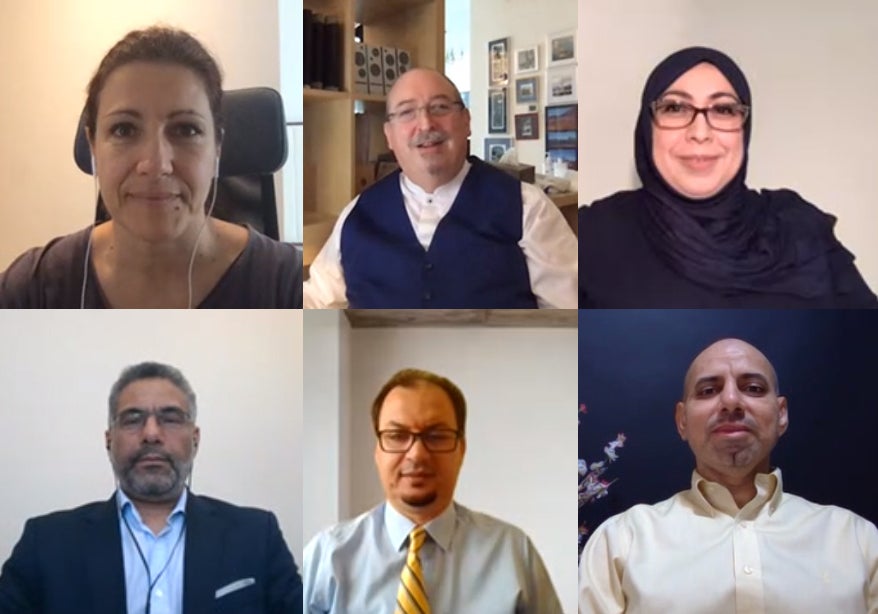
QEERI at HBKU to Lead New Project Focused on Reducing Atmospheric Carbon Dioxide
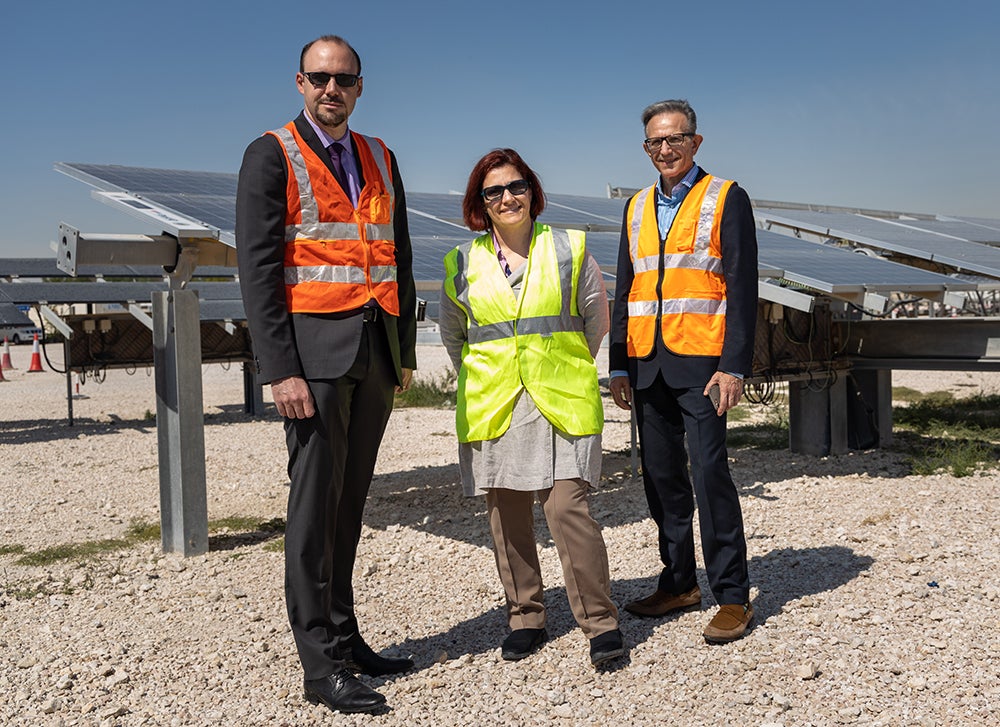
Qatar Environment and Energy Research Institute Providing Key Data for Development of Al Kharsaah 800MWp Photovoltaic Plant
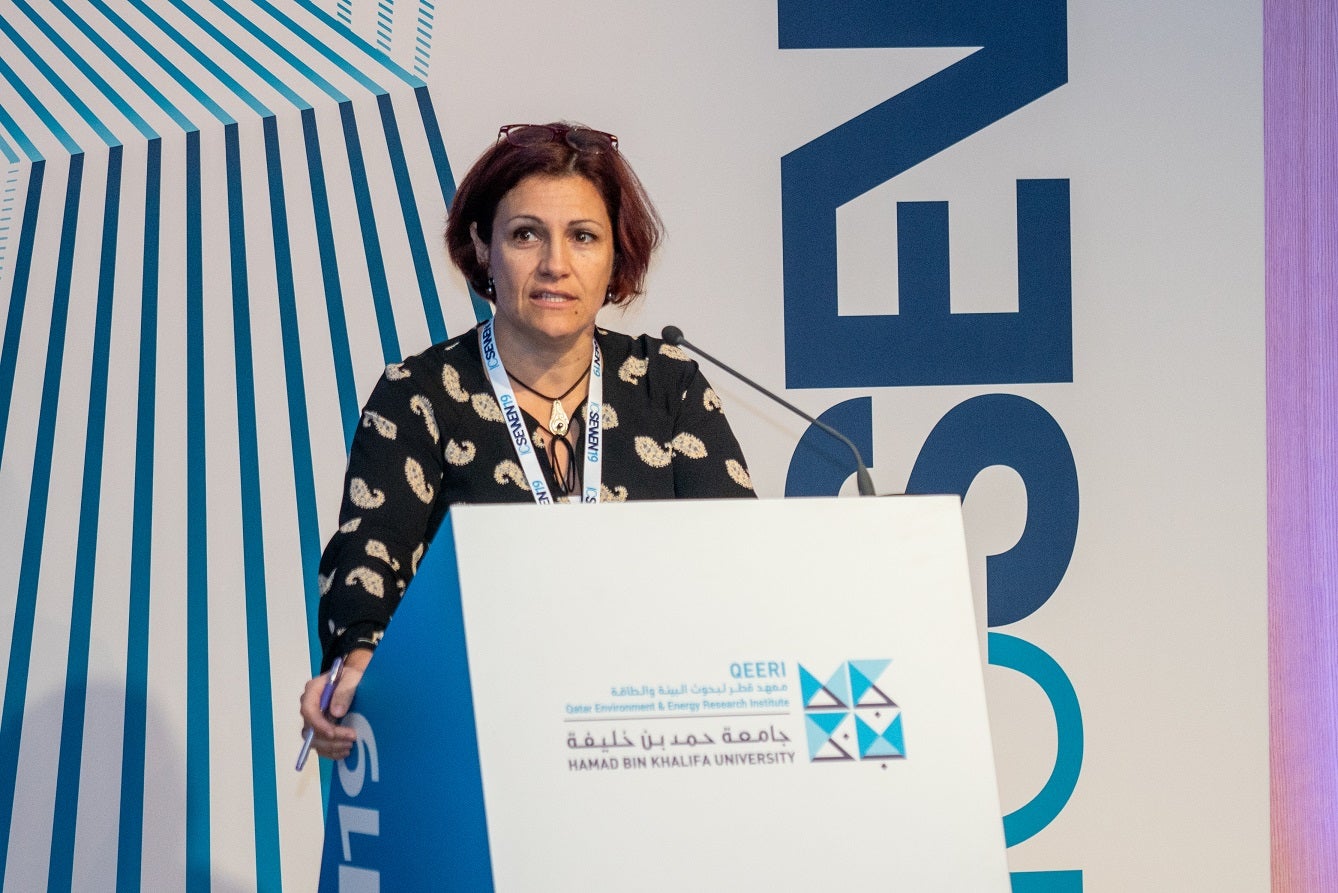
Experts Combine Efforts to Address Climate Challenges at Qatar Environment and Energy Research Institute Conference
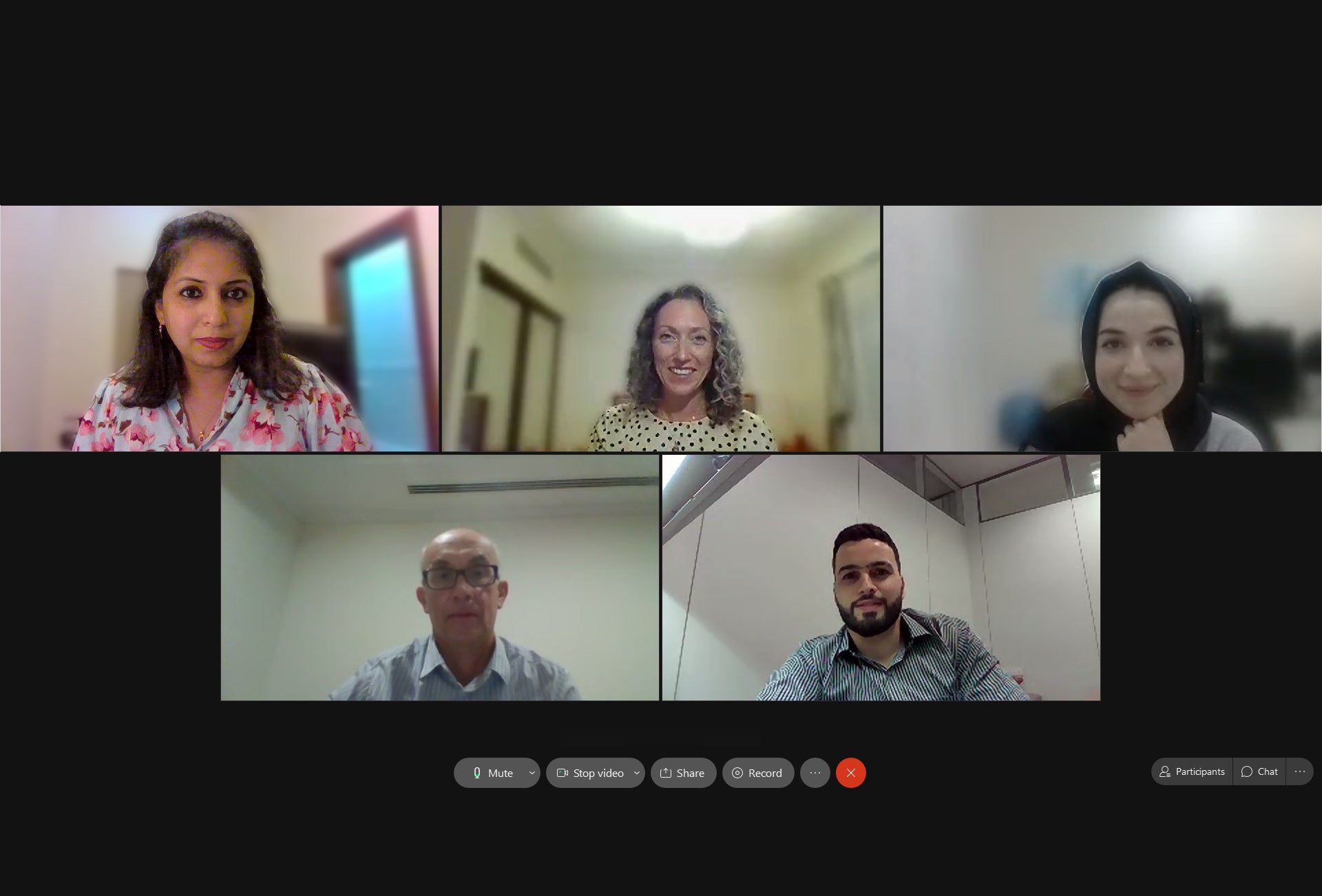
Qatar Environment and Energy Research Institute’s Second Science Majlis Promotes Awareness of Managing Scarce Water Resources
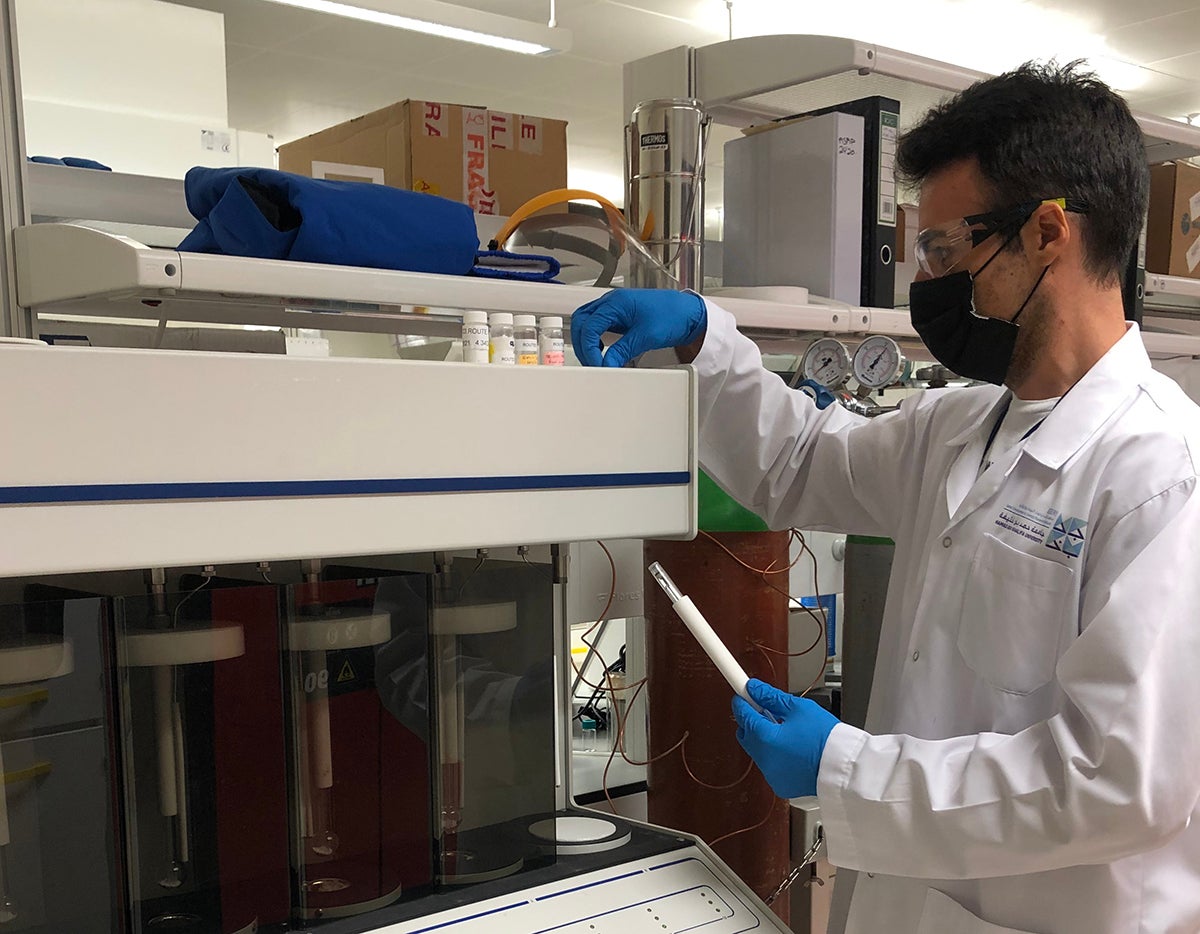
Research and Development Efforts by Qatar Environment and Energy Research Institute Focus on Innovation in Carbon Capture, Utilization, and Storage Technologies
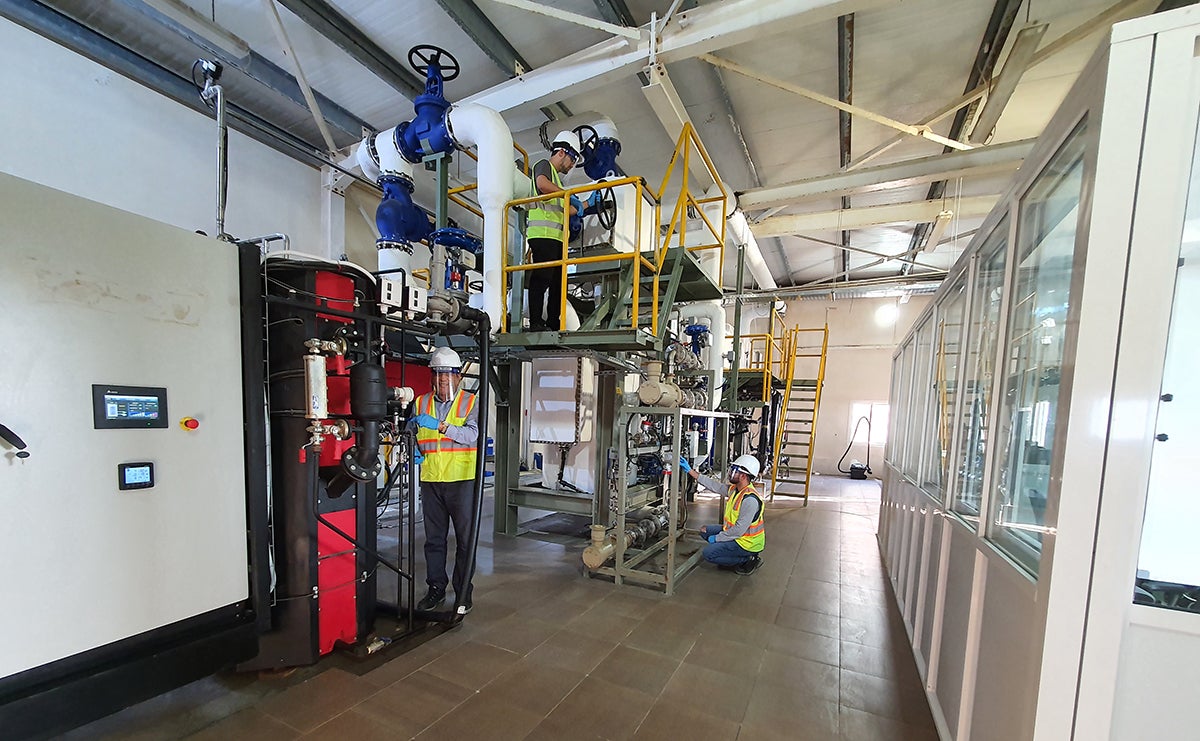
Qatar Environment and Energy Research Institute Develops and Installs MED Seawater Desalination Pilot Plant in Dukhan
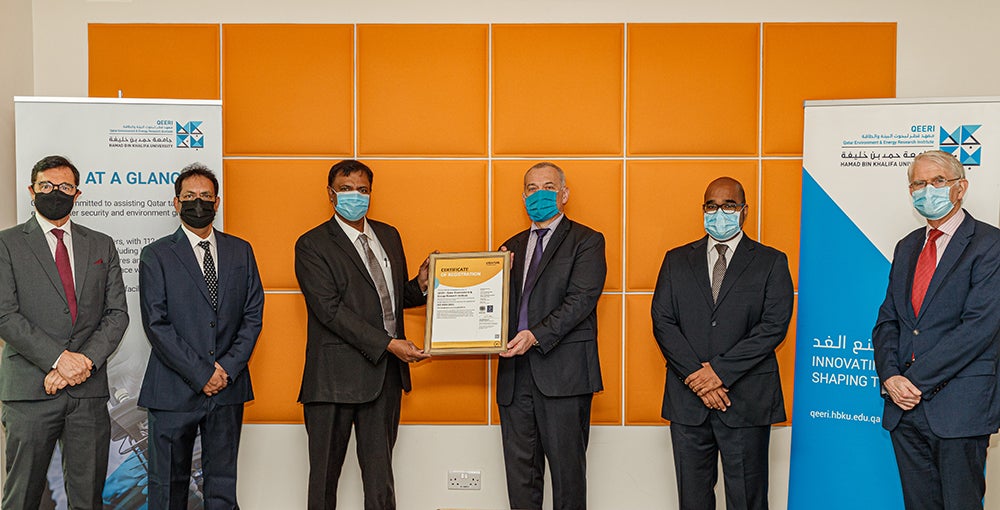
HBKU’s Qatar Environment and Energy Research Institute Awarded ISO Certification for its Integrated Management System
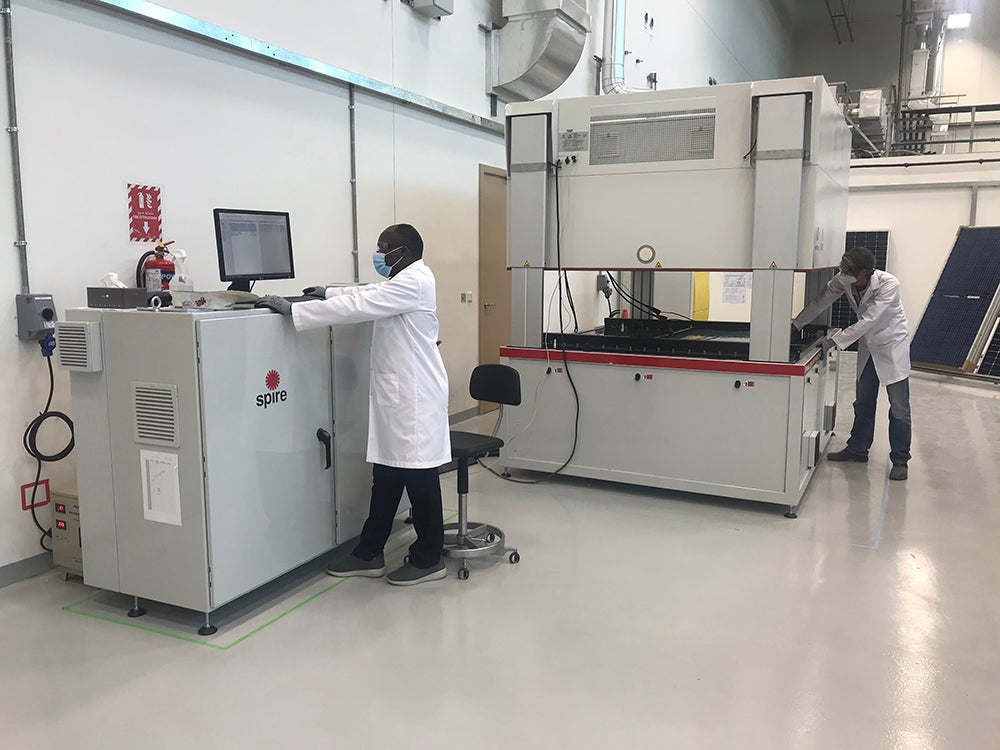
HBKU’s Qatar Environment and Energy Research Institute a Growing Force in Solar Technology Research
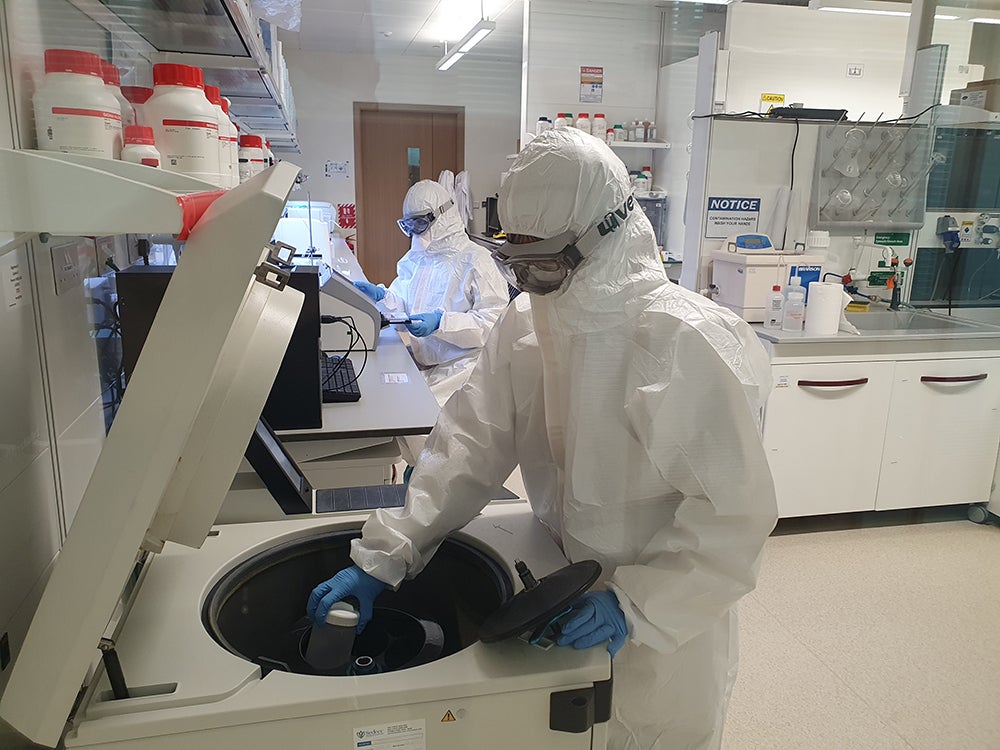
HBKU’s Qatar Environment and Energy Research Institute and Qatar Stakeholders Collaborative Project Aims to Detect COVID-19 in Wastewater
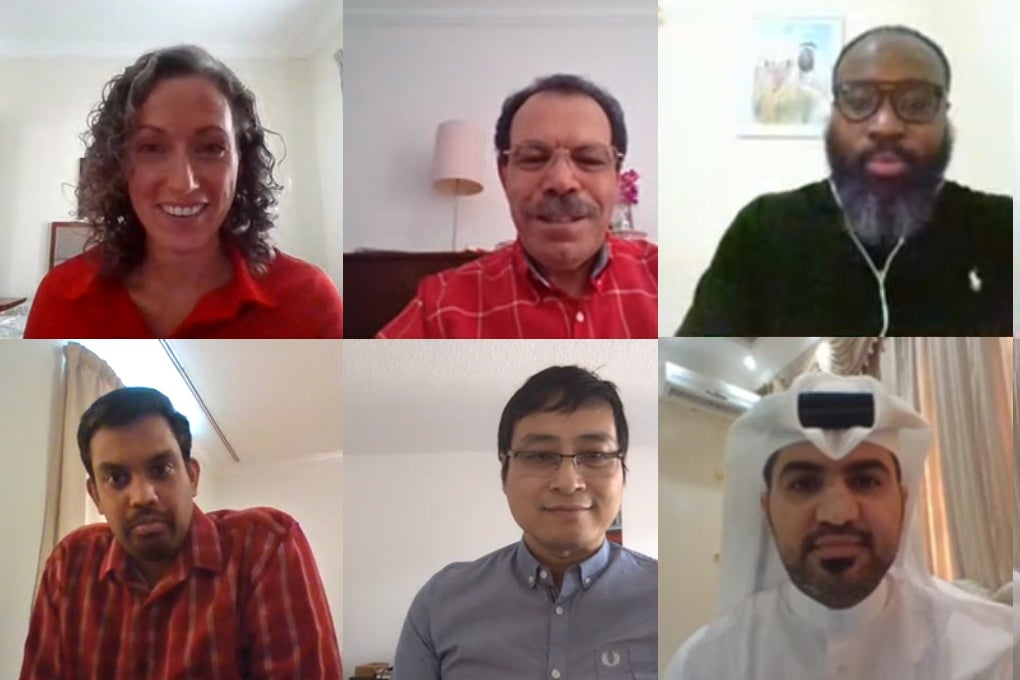
Qatar Environment and Energy Research Institute at HBKU Develops New Technology to Remove Oil from Seawater

QEERI at HBKU to Lead New Project Focused on Reducing Atmospheric Carbon Dioxide

Qatar Environment and Energy Research Institute Providing Key Data for Development of Al Kharsaah 800MWp Photovoltaic Plant

Experts Combine Efforts to Address Climate Challenges at Qatar Environment and Energy Research Institute Conference

Qatar Environment and Energy Research Institute’s Second Science Majlis Promotes Awareness of Managing Scarce Water Resources

Research and Development Efforts by Qatar Environment and Energy Research Institute Focus on Innovation in Carbon Capture, Utilization, and Storage Technologies

Qatar Environment and Energy Research Institute Develops and Installs MED Seawater Desalination Pilot Plant in Dukhan

HBKU’s Qatar Environment and Energy Research Institute Awarded ISO Certification for its Integrated Management System

HBKU’s Qatar Environment and Energy Research Institute a Growing Force in Solar Technology Research

HBKU’s Qatar Environment and Energy Research Institute and Qatar Stakeholders Collaborative Project Aims to Detect COVID-19 in Wastewater

Qatar Environment and Energy Research Institute at HBKU Develops New Technology to Remove Oil from Seawater

QEERI at HBKU to Lead New Project Focused on Reducing Atmospheric Carbon Dioxide

Qatar Environment and Energy Research Institute Providing Key Data for Development of Al Kharsaah 800MWp Photovoltaic Plant

Experts Combine Efforts to Address Climate Challenges at Qatar Environment and Energy Research Institute Conference

Qatar Environment and Energy Research Institute’s Second Science Majlis Promotes Awareness of Managing Scarce Water Resources

Research and Development Efforts by Qatar Environment and Energy Research Institute Focus on Innovation in Carbon Capture, Utilization, and Storage Technologies

Qatar Environment and Energy Research Institute Develops and Installs MED Seawater Desalination Pilot Plant in Dukhan

HBKU’s Qatar Environment and Energy Research Institute Awarded ISO Certification for its Integrated Management System

HBKU’s Qatar Environment and Energy Research Institute a Growing Force in Solar Technology Research

HBKU’s Qatar Environment and Energy Research Institute and Qatar Stakeholders Collaborative Project Aims to Detect COVID-19 in Wastewater

Qatar Environment and Energy Research Institute at HBKU Develops New Technology to Remove Oil from Seawater

QEERI at HBKU to Lead New Project Focused on Reducing Atmospheric Carbon Dioxide

Qatar Environment and Energy Research Institute Providing Key Data for Development of Al Kharsaah 800MWp Photovoltaic Plant

Experts Combine Efforts to Address Climate Challenges at Qatar Environment and Energy Research Institute Conference

Qatar Environment and Energy Research Institute’s Second Science Majlis Promotes Awareness of Managing Scarce Water Resources

Research and Development Efforts by Qatar Environment and Energy Research Institute Focus on Innovation in Carbon Capture, Utilization, and Storage Technologies

Qatar Environment and Energy Research Institute Develops and Installs MED Seawater Desalination Pilot Plant in Dukhan

HBKU’s Qatar Environment and Energy Research Institute Awarded ISO Certification for its Integrated Management System

HBKU’s Qatar Environment and Energy Research Institute a Growing Force in Solar Technology Research

HBKU’s Qatar Environment and Energy Research Institute and Qatar Stakeholders Collaborative Project Aims to Detect COVID-19 in Wastewater

Qatar Environment and Energy Research Institute at HBKU Develops New Technology to Remove Oil from Seawater

QEERI at HBKU to Lead New Project Focused on Reducing Atmospheric Carbon Dioxide

Qatar Environment and Energy Research Institute Providing Key Data for Development of Al Kharsaah 800MWp Photovoltaic Plant

Experts Combine Efforts to Address Climate Challenges at Qatar Environment and Energy Research Institute Conference

Qatar Environment and Energy Research Institute’s Second Science Majlis Promotes Awareness of Managing Scarce Water Resources

Research and Development Efforts by Qatar Environment and Energy Research Institute Focus on Innovation in Carbon Capture, Utilization, and Storage Technologies

Qatar Environment and Energy Research Institute Develops and Installs MED Seawater Desalination Pilot Plant in Dukhan

HBKU’s Qatar Environment and Energy Research Institute Awarded ISO Certification for its Integrated Management System

HBKU’s Qatar Environment and Energy Research Institute a Growing Force in Solar Technology Research

HBKU’s Qatar Environment and Energy Research Institute and Qatar Stakeholders Collaborative Project Aims to Detect COVID-19 in Wastewater

Qatar Environment and Energy Research Institute at HBKU Develops New Technology to Remove Oil from Seawater

QEERI at HBKU to Lead New Project Focused on Reducing Atmospheric Carbon Dioxide

Qatar Environment and Energy Research Institute Providing Key Data for Development of Al Kharsaah 800MWp Photovoltaic Plant

Experts Combine Efforts to Address Climate Challenges at Qatar Environment and Energy Research Institute Conference

Qatar Environment and Energy Research Institute’s Second Science Majlis Promotes Awareness of Managing Scarce Water Resources

Research and Development Efforts by Qatar Environment and Energy Research Institute Focus on Innovation in Carbon Capture, Utilization, and Storage Technologies

Qatar Environment and Energy Research Institute Develops and Installs MED Seawater Desalination Pilot Plant in Dukhan

HBKU’s Qatar Environment and Energy Research Institute Awarded ISO Certification for its Integrated Management System

HBKU’s Qatar Environment and Energy Research Institute a Growing Force in Solar Technology Research

HBKU’s Qatar Environment and Energy Research Institute and Qatar Stakeholders Collaborative Project Aims to Detect COVID-19 in Wastewater

Qatar Environment and Energy Research Institute at HBKU Develops New Technology to Remove Oil from Seawater

QEERI at HBKU to Lead New Project Focused on Reducing Atmospheric Carbon Dioxide

Qatar Environment and Energy Research Institute Providing Key Data for Development of Al Kharsaah 800MWp Photovoltaic Plant

Experts Combine Efforts to Address Climate Challenges at Qatar Environment and Energy Research Institute Conference

Qatar Environment and Energy Research Institute’s Second Science Majlis Promotes Awareness of Managing Scarce Water Resources

Research and Development Efforts by Qatar Environment and Energy Research Institute Focus on Innovation in Carbon Capture, Utilization, and Storage Technologies

Qatar Environment and Energy Research Institute Develops and Installs MED Seawater Desalination Pilot Plant in Dukhan

HBKU’s Qatar Environment and Energy Research Institute Awarded ISO Certification for its Integrated Management System

HBKU’s Qatar Environment and Energy Research Institute a Growing Force in Solar Technology Research

HBKU’s Qatar Environment and Energy Research Institute and Qatar Stakeholders Collaborative Project Aims to Detect COVID-19 in Wastewater

Qatar Environment and Energy Research Institute at HBKU Develops New Technology to Remove Oil from Seawater

QEERI at HBKU to Lead New Project Focused on Reducing Atmospheric Carbon Dioxide

Qatar Environment and Energy Research Institute Providing Key Data for Development of Al Kharsaah 800MWp Photovoltaic Plant

Experts Combine Efforts to Address Climate Challenges at Qatar Environment and Energy Research Institute Conference

Qatar Environment and Energy Research Institute’s Second Science Majlis Promotes Awareness of Managing Scarce Water Resources

Research and Development Efforts by Qatar Environment and Energy Research Institute Focus on Innovation in Carbon Capture, Utilization, and Storage Technologies

Qatar Environment and Energy Research Institute Develops and Installs MED Seawater Desalination Pilot Plant in Dukhan

HBKU’s Qatar Environment and Energy Research Institute Awarded ISO Certification for its Integrated Management System

HBKU’s Qatar Environment and Energy Research Institute a Growing Force in Solar Technology Research

HBKU’s Qatar Environment and Energy Research Institute and Qatar Stakeholders Collaborative Project Aims to Detect COVID-19 in Wastewater

Qatar Environment and Energy Research Institute at HBKU Develops New Technology to Remove Oil from Seawater

QEERI at HBKU to Lead New Project Focused on Reducing Atmospheric Carbon Dioxide

Qatar Environment and Energy Research Institute Providing Key Data for Development of Al Kharsaah 800MWp Photovoltaic Plant

Experts Combine Efforts to Address Climate Challenges at Qatar Environment and Energy Research Institute Conference

Qatar Environment and Energy Research Institute’s Second Science Majlis Promotes Awareness of Managing Scarce Water Resources

Research and Development Efforts by Qatar Environment and Energy Research Institute Focus on Innovation in Carbon Capture, Utilization, and Storage Technologies

Qatar Environment and Energy Research Institute Develops and Installs MED Seawater Desalination Pilot Plant in Dukhan

HBKU’s Qatar Environment and Energy Research Institute Awarded ISO Certification for its Integrated Management System

HBKU’s Qatar Environment and Energy Research Institute a Growing Force in Solar Technology Research

HBKU’s Qatar Environment and Energy Research Institute and Qatar Stakeholders Collaborative Project Aims to Detect COVID-19 in Wastewater

Qatar Environment and Energy Research Institute at HBKU Develops New Technology to Remove Oil from Seawater

QEERI at HBKU to Lead New Project Focused on Reducing Atmospheric Carbon Dioxide

Qatar Environment and Energy Research Institute Providing Key Data for Development of Al Kharsaah 800MWp Photovoltaic Plant

Experts Combine Efforts to Address Climate Challenges at Qatar Environment and Energy Research Institute Conference

Qatar Environment and Energy Research Institute’s Second Science Majlis Promotes Awareness of Managing Scarce Water Resources

Research and Development Efforts by Qatar Environment and Energy Research Institute Focus on Innovation in Carbon Capture, Utilization, and Storage Technologies

Qatar Environment and Energy Research Institute Develops and Installs MED Seawater Desalination Pilot Plant in Dukhan

HBKU’s Qatar Environment and Energy Research Institute Awarded ISO Certification for its Integrated Management System

HBKU’s Qatar Environment and Energy Research Institute a Growing Force in Solar Technology Research

HBKU’s Qatar Environment and Energy Research Institute and Qatar Stakeholders Collaborative Project Aims to Detect COVID-19 in Wastewater

Qatar Environment and Energy Research Institute at HBKU Develops New Technology to Remove Oil from Seawater

QEERI at HBKU to Lead New Project Focused on Reducing Atmospheric Carbon Dioxide

Qatar Environment and Energy Research Institute Providing Key Data for Development of Al Kharsaah 800MWp Photovoltaic Plant

Experts Combine Efforts to Address Climate Challenges at Qatar Environment and Energy Research Institute Conference

Qatar Environment and Energy Research Institute’s Second Science Majlis Promotes Awareness of Managing Scarce Water Resources

Research and Development Efforts by Qatar Environment and Energy Research Institute Focus on Innovation in Carbon Capture, Utilization, and Storage Technologies

Qatar Environment and Energy Research Institute Develops and Installs MED Seawater Desalination Pilot Plant in Dukhan

HBKU’s Qatar Environment and Energy Research Institute Awarded ISO Certification for its Integrated Management System

HBKU’s Qatar Environment and Energy Research Institute a Growing Force in Solar Technology Research

HBKU’s Qatar Environment and Energy Research Institute and Qatar Stakeholders Collaborative Project Aims to Detect COVID-19 in Wastewater

Qatar Environment and Energy Research Institute at HBKU Develops New Technology to Remove Oil from Seawater

QEERI at HBKU to Lead New Project Focused on Reducing Atmospheric Carbon Dioxide

Qatar Environment and Energy Research Institute Providing Key Data for Development of Al Kharsaah 800MWp Photovoltaic Plant

Experts Combine Efforts to Address Climate Challenges at Qatar Environment and Energy Research Institute Conference

Qatar Environment and Energy Research Institute’s Second Science Majlis Promotes Awareness of Managing Scarce Water Resources

Research and Development Efforts by Qatar Environment and Energy Research Institute Focus on Innovation in Carbon Capture, Utilization, and Storage Technologies

Qatar Environment and Energy Research Institute Develops and Installs MED Seawater Desalination Pilot Plant in Dukhan

HBKU’s Qatar Environment and Energy Research Institute Awarded ISO Certification for its Integrated Management System

HBKU’s Qatar Environment and Energy Research Institute a Growing Force in Solar Technology Research

HBKU’s Qatar Environment and Energy Research Institute and Qatar Stakeholders Collaborative Project Aims to Detect COVID-19 in Wastewater

Qatar Environment and Energy Research Institute at HBKU Develops New Technology to Remove Oil from Seawater

QEERI at HBKU to Lead New Project Focused on Reducing Atmospheric Carbon Dioxide

Qatar Environment and Energy Research Institute Providing Key Data for Development of Al Kharsaah 800MWp Photovoltaic Plant

Experts Combine Efforts to Address Climate Challenges at Qatar Environment and Energy Research Institute Conference

Qatar Environment and Energy Research Institute’s Second Science Majlis Promotes Awareness of Managing Scarce Water Resources

Research and Development Efforts by Qatar Environment and Energy Research Institute Focus on Innovation in Carbon Capture, Utilization, and Storage Technologies

Qatar Environment and Energy Research Institute Develops and Installs MED Seawater Desalination Pilot Plant in Dukhan

HBKU’s Qatar Environment and Energy Research Institute Awarded ISO Certification for its Integrated Management System

HBKU’s Qatar Environment and Energy Research Institute a Growing Force in Solar Technology Research

HBKU’s Qatar Environment and Energy Research Institute and Qatar Stakeholders Collaborative Project Aims to Detect COVID-19 in Wastewater

Qatar Environment and Energy Research Institute at HBKU Develops New Technology to Remove Oil from Seawater

QEERI at HBKU to Lead New Project Focused on Reducing Atmospheric Carbon Dioxide

Qatar Environment and Energy Research Institute Providing Key Data for Development of Al Kharsaah 800MWp Photovoltaic Plant

Experts Combine Efforts to Address Climate Challenges at Qatar Environment and Energy Research Institute Conference

Qatar Environment and Energy Research Institute’s Second Science Majlis Promotes Awareness of Managing Scarce Water Resources

Research and Development Efforts by Qatar Environment and Energy Research Institute Focus on Innovation in Carbon Capture, Utilization, and Storage Technologies

Qatar Environment and Energy Research Institute Develops and Installs MED Seawater Desalination Pilot Plant in Dukhan

HBKU’s Qatar Environment and Energy Research Institute Awarded ISO Certification for its Integrated Management System

HBKU’s Qatar Environment and Energy Research Institute a Growing Force in Solar Technology Research

HBKU’s Qatar Environment and Energy Research Institute and Qatar Stakeholders Collaborative Project Aims to Detect COVID-19 in Wastewater

Qatar Environment and Energy Research Institute at HBKU Develops New Technology to Remove Oil from Seawater

QEERI at HBKU to Lead New Project Focused on Reducing Atmospheric Carbon Dioxide

Qatar Environment and Energy Research Institute Providing Key Data for Development of Al Kharsaah 800MWp Photovoltaic Plant

Experts Combine Efforts to Address Climate Challenges at Qatar Environment and Energy Research Institute Conference

Qatar Environment and Energy Research Institute’s Second Science Majlis Promotes Awareness of Managing Scarce Water Resources

Research and Development Efforts by Qatar Environment and Energy Research Institute Focus on Innovation in Carbon Capture, Utilization, and Storage Technologies

Qatar Environment and Energy Research Institute Develops and Installs MED Seawater Desalination Pilot Plant in Dukhan

HBKU’s Qatar Environment and Energy Research Institute Awarded ISO Certification for its Integrated Management System

HBKU’s Qatar Environment and Energy Research Institute a Growing Force in Solar Technology Research

HBKU’s Qatar Environment and Energy Research Institute and Qatar Stakeholders Collaborative Project Aims to Detect COVID-19 in Wastewater

Qatar Environment and Energy Research Institute at HBKU Develops New Technology to Remove Oil from Seawater

QEERI at HBKU to Lead New Project Focused on Reducing Atmospheric Carbon Dioxide

Qatar Environment and Energy Research Institute Providing Key Data for Development of Al Kharsaah 800MWp Photovoltaic Plant

Experts Combine Efforts to Address Climate Challenges at Qatar Environment and Energy Research Institute Conference

Qatar Environment and Energy Research Institute’s Second Science Majlis Promotes Awareness of Managing Scarce Water Resources

Research and Development Efforts by Qatar Environment and Energy Research Institute Focus on Innovation in Carbon Capture, Utilization, and Storage Technologies

Qatar Environment and Energy Research Institute Develops and Installs MED Seawater Desalination Pilot Plant in Dukhan

HBKU’s Qatar Environment and Energy Research Institute Awarded ISO Certification for its Integrated Management System

HBKU’s Qatar Environment and Energy Research Institute a Growing Force in Solar Technology Research

HBKU’s Qatar Environment and Energy Research Institute and Qatar Stakeholders Collaborative Project Aims to Detect COVID-19 in Wastewater

Qatar Environment and Energy Research Institute at HBKU Develops New Technology to Remove Oil from Seawater

QEERI at HBKU to Lead New Project Focused on Reducing Atmospheric Carbon Dioxide

Qatar Environment and Energy Research Institute Providing Key Data for Development of Al Kharsaah 800MWp Photovoltaic Plant

Experts Combine Efforts to Address Climate Challenges at Qatar Environment and Energy Research Institute Conference

Qatar Environment and Energy Research Institute’s Second Science Majlis Promotes Awareness of Managing Scarce Water Resources

Research and Development Efforts by Qatar Environment and Energy Research Institute Focus on Innovation in Carbon Capture, Utilization, and Storage Technologies

Qatar Environment and Energy Research Institute Develops and Installs MED Seawater Desalination Pilot Plant in Dukhan

HBKU’s Qatar Environment and Energy Research Institute Awarded ISO Certification for its Integrated Management System

HBKU’s Qatar Environment and Energy Research Institute a Growing Force in Solar Technology Research

HBKU’s Qatar Environment and Energy Research Institute and Qatar Stakeholders Collaborative Project Aims to Detect COVID-19 in Wastewater

Qatar Environment and Energy Research Institute at HBKU Develops New Technology to Remove Oil from Seawater

QEERI at HBKU to Lead New Project Focused on Reducing Atmospheric Carbon Dioxide

Qatar Environment and Energy Research Institute Providing Key Data for Development of Al Kharsaah 800MWp Photovoltaic Plant

Experts Combine Efforts to Address Climate Challenges at Qatar Environment and Energy Research Institute Conference

Qatar Environment and Energy Research Institute’s Second Science Majlis Promotes Awareness of Managing Scarce Water Resources

Research and Development Efforts by Qatar Environment and Energy Research Institute Focus on Innovation in Carbon Capture, Utilization, and Storage Technologies

Qatar Environment and Energy Research Institute Develops and Installs MED Seawater Desalination Pilot Plant in Dukhan

HBKU’s Qatar Environment and Energy Research Institute Awarded ISO Certification for its Integrated Management System

HBKU’s Qatar Environment and Energy Research Institute a Growing Force in Solar Technology Research

HBKU’s Qatar Environment and Energy Research Institute and Qatar Stakeholders Collaborative Project Aims to Detect COVID-19 in Wastewater

Qatar Environment and Energy Research Institute at HBKU Develops New Technology to Remove Oil from Seawater

QEERI at HBKU to Lead New Project Focused on Reducing Atmospheric Carbon Dioxide

Qatar Environment and Energy Research Institute Providing Key Data for Development of Al Kharsaah 800MWp Photovoltaic Plant

Experts Combine Efforts to Address Climate Challenges at Qatar Environment and Energy Research Institute Conference

Qatar Environment and Energy Research Institute’s Second Science Majlis Promotes Awareness of Managing Scarce Water Resources

Research and Development Efforts by Qatar Environment and Energy Research Institute Focus on Innovation in Carbon Capture, Utilization, and Storage Technologies

Qatar Environment and Energy Research Institute Develops and Installs MED Seawater Desalination Pilot Plant in Dukhan

HBKU’s Qatar Environment and Energy Research Institute Awarded ISO Certification for its Integrated Management System

HBKU’s Qatar Environment and Energy Research Institute a Growing Force in Solar Technology Research

HBKU’s Qatar Environment and Energy Research Institute and Qatar Stakeholders Collaborative Project Aims to Detect COVID-19 in Wastewater

Qatar Environment and Energy Research Institute at HBKU Develops New Technology to Remove Oil from Seawater

QEERI at HBKU to Lead New Project Focused on Reducing Atmospheric Carbon Dioxide

Qatar Environment and Energy Research Institute Providing Key Data for Development of Al Kharsaah 800MWp Photovoltaic Plant

Experts Combine Efforts to Address Climate Challenges at Qatar Environment and Energy Research Institute Conference

Qatar Environment and Energy Research Institute’s Second Science Majlis Promotes Awareness of Managing Scarce Water Resources

Research and Development Efforts by Qatar Environment and Energy Research Institute Focus on Innovation in Carbon Capture, Utilization, and Storage Technologies

Qatar Environment and Energy Research Institute Develops and Installs MED Seawater Desalination Pilot Plant in Dukhan

HBKU’s Qatar Environment and Energy Research Institute Awarded ISO Certification for its Integrated Management System

HBKU’s Qatar Environment and Energy Research Institute a Growing Force in Solar Technology Research

HBKU’s Qatar Environment and Energy Research Institute and Qatar Stakeholders Collaborative Project Aims to Detect COVID-19 in Wastewater

Qatar Environment and Energy Research Institute at HBKU Develops New Technology to Remove Oil from Seawater

QEERI at HBKU to Lead New Project Focused on Reducing Atmospheric Carbon Dioxide

Qatar Environment and Energy Research Institute Providing Key Data for Development of Al Kharsaah 800MWp Photovoltaic Plant

Experts Combine Efforts to Address Climate Challenges at Qatar Environment and Energy Research Institute Conference

Qatar Environment and Energy Research Institute’s Second Science Majlis Promotes Awareness of Managing Scarce Water Resources

Research and Development Efforts by Qatar Environment and Energy Research Institute Focus on Innovation in Carbon Capture, Utilization, and Storage Technologies

Qatar Environment and Energy Research Institute Develops and Installs MED Seawater Desalination Pilot Plant in Dukhan

HBKU’s Qatar Environment and Energy Research Institute Awarded ISO Certification for its Integrated Management System

HBKU’s Qatar Environment and Energy Research Institute a Growing Force in Solar Technology Research

HBKU’s Qatar Environment and Energy Research Institute and Qatar Stakeholders Collaborative Project Aims to Detect COVID-19 in Wastewater

Qatar Environment and Energy Research Institute at HBKU Develops New Technology to Remove Oil from Seawater

QEERI at HBKU to Lead New Project Focused on Reducing Atmospheric Carbon Dioxide

Qatar Environment and Energy Research Institute Providing Key Data for Development of Al Kharsaah 800MWp Photovoltaic Plant

Experts Combine Efforts to Address Climate Challenges at Qatar Environment and Energy Research Institute Conference

Qatar Environment and Energy Research Institute’s Second Science Majlis Promotes Awareness of Managing Scarce Water Resources

Research and Development Efforts by Qatar Environment and Energy Research Institute Focus on Innovation in Carbon Capture, Utilization, and Storage Technologies

Qatar Environment and Energy Research Institute Develops and Installs MED Seawater Desalination Pilot Plant in Dukhan

HBKU’s Qatar Environment and Energy Research Institute Awarded ISO Certification for its Integrated Management System

HBKU’s Qatar Environment and Energy Research Institute a Growing Force in Solar Technology Research

HBKU’s Qatar Environment and Energy Research Institute and Qatar Stakeholders Collaborative Project Aims to Detect COVID-19 in Wastewater

Qatar Environment and Energy Research Institute at HBKU Develops New Technology to Remove Oil from Seawater

QEERI at HBKU to Lead New Project Focused on Reducing Atmospheric Carbon Dioxide

Qatar Environment and Energy Research Institute Providing Key Data for Development of Al Kharsaah 800MWp Photovoltaic Plant

Experts Combine Efforts to Address Climate Challenges at Qatar Environment and Energy Research Institute Conference

Qatar Environment and Energy Research Institute’s Second Science Majlis Promotes Awareness of Managing Scarce Water Resources

Research and Development Efforts by Qatar Environment and Energy Research Institute Focus on Innovation in Carbon Capture, Utilization, and Storage Technologies

Qatar Environment and Energy Research Institute Develops and Installs MED Seawater Desalination Pilot Plant in Dukhan

HBKU’s Qatar Environment and Energy Research Institute Awarded ISO Certification for its Integrated Management System

HBKU’s Qatar Environment and Energy Research Institute a Growing Force in Solar Technology Research

HBKU’s Qatar Environment and Energy Research Institute and Qatar Stakeholders Collaborative Project Aims to Detect COVID-19 in Wastewater

Qatar Environment and Energy Research Institute at HBKU Develops New Technology to Remove Oil from Seawater

QEERI at HBKU to Lead New Project Focused on Reducing Atmospheric Carbon Dioxide

Qatar Environment and Energy Research Institute Providing Key Data for Development of Al Kharsaah 800MWp Photovoltaic Plant

Experts Combine Efforts to Address Climate Challenges at Qatar Environment and Energy Research Institute Conference

Qatar Environment and Energy Research Institute’s Second Science Majlis Promotes Awareness of Managing Scarce Water Resources

Research and Development Efforts by Qatar Environment and Energy Research Institute Focus on Innovation in Carbon Capture, Utilization, and Storage Technologies

Qatar Environment and Energy Research Institute Develops and Installs MED Seawater Desalination Pilot Plant in Dukhan

HBKU’s Qatar Environment and Energy Research Institute Awarded ISO Certification for its Integrated Management System

HBKU’s Qatar Environment and Energy Research Institute a Growing Force in Solar Technology Research

HBKU’s Qatar Environment and Energy Research Institute and Qatar Stakeholders Collaborative Project Aims to Detect COVID-19 in Wastewater

Qatar Environment and Energy Research Institute at HBKU Develops New Technology to Remove Oil from Seawater

QEERI at HBKU to Lead New Project Focused on Reducing Atmospheric Carbon Dioxide

Qatar Environment and Energy Research Institute Providing Key Data for Development of Al Kharsaah 800MWp Photovoltaic Plant

Experts Combine Efforts to Address Climate Challenges at Qatar Environment and Energy Research Institute Conference

Qatar Environment and Energy Research Institute’s Second Science Majlis Promotes Awareness of Managing Scarce Water Resources

Research and Development Efforts by Qatar Environment and Energy Research Institute Focus on Innovation in Carbon Capture, Utilization, and Storage Technologies

Qatar Environment and Energy Research Institute Develops and Installs MED Seawater Desalination Pilot Plant in Dukhan

HBKU’s Qatar Environment and Energy Research Institute Awarded ISO Certification for its Integrated Management System

HBKU’s Qatar Environment and Energy Research Institute a Growing Force in Solar Technology Research

HBKU’s Qatar Environment and Energy Research Institute and Qatar Stakeholders Collaborative Project Aims to Detect COVID-19 in Wastewater

Qatar Environment and Energy Research Institute at HBKU Develops New Technology to Remove Oil from Seawater

QEERI at HBKU to Lead New Project Focused on Reducing Atmospheric Carbon Dioxide

Qatar Environment and Energy Research Institute Providing Key Data for Development of Al Kharsaah 800MWp Photovoltaic Plant

Experts Combine Efforts to Address Climate Challenges at Qatar Environment and Energy Research Institute Conference

Qatar Environment and Energy Research Institute’s Second Science Majlis Promotes Awareness of Managing Scarce Water Resources

Research and Development Efforts by Qatar Environment and Energy Research Institute Focus on Innovation in Carbon Capture, Utilization, and Storage Technologies

Qatar Environment and Energy Research Institute Develops and Installs MED Seawater Desalination Pilot Plant in Dukhan

HBKU’s Qatar Environment and Energy Research Institute Awarded ISO Certification for its Integrated Management System

HBKU’s Qatar Environment and Energy Research Institute a Growing Force in Solar Technology Research

HBKU’s Qatar Environment and Energy Research Institute and Qatar Stakeholders Collaborative Project Aims to Detect COVID-19 in Wastewater

Qatar Environment and Energy Research Institute at HBKU Develops New Technology to Remove Oil from Seawater

QEERI at HBKU to Lead New Project Focused on Reducing Atmospheric Carbon Dioxide

Qatar Environment and Energy Research Institute Providing Key Data for Development of Al Kharsaah 800MWp Photovoltaic Plant

Experts Combine Efforts to Address Climate Challenges at Qatar Environment and Energy Research Institute Conference

Qatar Environment and Energy Research Institute’s Second Science Majlis Promotes Awareness of Managing Scarce Water Resources

Research and Development Efforts by Qatar Environment and Energy Research Institute Focus on Innovation in Carbon Capture, Utilization, and Storage Technologies

Qatar Environment and Energy Research Institute Develops and Installs MED Seawater Desalination Pilot Plant in Dukhan

HBKU’s Qatar Environment and Energy Research Institute Awarded ISO Certification for its Integrated Management System

HBKU’s Qatar Environment and Energy Research Institute a Growing Force in Solar Technology Research

HBKU’s Qatar Environment and Energy Research Institute and Qatar Stakeholders Collaborative Project Aims to Detect COVID-19 in Wastewater

Qatar Environment and Energy Research Institute at HBKU Develops New Technology to Remove Oil from Seawater

QEERI at HBKU to Lead New Project Focused on Reducing Atmospheric Carbon Dioxide

Qatar Environment and Energy Research Institute Providing Key Data for Development of Al Kharsaah 800MWp Photovoltaic Plant

Experts Combine Efforts to Address Climate Challenges at Qatar Environment and Energy Research Institute Conference

Qatar Environment and Energy Research Institute’s Second Science Majlis Promotes Awareness of Managing Scarce Water Resources

Research and Development Efforts by Qatar Environment and Energy Research Institute Focus on Innovation in Carbon Capture, Utilization, and Storage Technologies

Qatar Environment and Energy Research Institute Develops and Installs MED Seawater Desalination Pilot Plant in Dukhan

HBKU’s Qatar Environment and Energy Research Institute Awarded ISO Certification for its Integrated Management System

HBKU’s Qatar Environment and Energy Research Institute a Growing Force in Solar Technology Research

HBKU’s Qatar Environment and Energy Research Institute and Qatar Stakeholders Collaborative Project Aims to Detect COVID-19 in Wastewater

Qatar Environment and Energy Research Institute at HBKU Develops New Technology to Remove Oil from Seawater

QEERI at HBKU to Lead New Project Focused on Reducing Atmospheric Carbon Dioxide

Qatar Environment and Energy Research Institute Providing Key Data for Development of Al Kharsaah 800MWp Photovoltaic Plant

Experts Combine Efforts to Address Climate Challenges at Qatar Environment and Energy Research Institute Conference

Qatar Environment and Energy Research Institute’s Second Science Majlis Promotes Awareness of Managing Scarce Water Resources

Research and Development Efforts by Qatar Environment and Energy Research Institute Focus on Innovation in Carbon Capture, Utilization, and Storage Technologies

Qatar Environment and Energy Research Institute Develops and Installs MED Seawater Desalination Pilot Plant in Dukhan

HBKU’s Qatar Environment and Energy Research Institute Awarded ISO Certification for its Integrated Management System

HBKU’s Qatar Environment and Energy Research Institute a Growing Force in Solar Technology Research

HBKU’s Qatar Environment and Energy Research Institute and Qatar Stakeholders Collaborative Project Aims to Detect COVID-19 in Wastewater

Qatar Environment and Energy Research Institute at HBKU Develops New Technology to Remove Oil from Seawater

QEERI at HBKU to Lead New Project Focused on Reducing Atmospheric Carbon Dioxide

Qatar Environment and Energy Research Institute Providing Key Data for Development of Al Kharsaah 800MWp Photovoltaic Plant

Experts Combine Efforts to Address Climate Challenges at Qatar Environment and Energy Research Institute Conference

Qatar Environment and Energy Research Institute’s Second Science Majlis Promotes Awareness of Managing Scarce Water Resources

Research and Development Efforts by Qatar Environment and Energy Research Institute Focus on Innovation in Carbon Capture, Utilization, and Storage Technologies

Qatar Environment and Energy Research Institute Develops and Installs MED Seawater Desalination Pilot Plant in Dukhan

HBKU’s Qatar Environment and Energy Research Institute Awarded ISO Certification for its Integrated Management System

HBKU’s Qatar Environment and Energy Research Institute a Growing Force in Solar Technology Research

HBKU’s Qatar Environment and Energy Research Institute and Qatar Stakeholders Collaborative Project Aims to Detect COVID-19 in Wastewater

Qatar Environment and Energy Research Institute at HBKU Develops New Technology to Remove Oil from Seawater

QEERI at HBKU to Lead New Project Focused on Reducing Atmospheric Carbon Dioxide

Qatar Environment and Energy Research Institute Providing Key Data for Development of Al Kharsaah 800MWp Photovoltaic Plant

Experts Combine Efforts to Address Climate Challenges at Qatar Environment and Energy Research Institute Conference

Qatar Environment and Energy Research Institute’s Second Science Majlis Promotes Awareness of Managing Scarce Water Resources

Research and Development Efforts by Qatar Environment and Energy Research Institute Focus on Innovation in Carbon Capture, Utilization, and Storage Technologies

Qatar Environment and Energy Research Institute Develops and Installs MED Seawater Desalination Pilot Plant in Dukhan

HBKU’s Qatar Environment and Energy Research Institute Awarded ISO Certification for its Integrated Management System

HBKU’s Qatar Environment and Energy Research Institute a Growing Force in Solar Technology Research

HBKU’s Qatar Environment and Energy Research Institute and Qatar Stakeholders Collaborative Project Aims to Detect COVID-19 in Wastewater

Qatar Environment and Energy Research Institute at HBKU Develops New Technology to Remove Oil from Seawater

QEERI at HBKU to Lead New Project Focused on Reducing Atmospheric Carbon Dioxide

Qatar Environment and Energy Research Institute Providing Key Data for Development of Al Kharsaah 800MWp Photovoltaic Plant

Experts Combine Efforts to Address Climate Challenges at Qatar Environment and Energy Research Institute Conference

Qatar Environment and Energy Research Institute’s Second Science Majlis Promotes Awareness of Managing Scarce Water Resources

Research and Development Efforts by Qatar Environment and Energy Research Institute Focus on Innovation in Carbon Capture, Utilization, and Storage Technologies

Qatar Environment and Energy Research Institute Develops and Installs MED Seawater Desalination Pilot Plant in Dukhan

HBKU’s Qatar Environment and Energy Research Institute Awarded ISO Certification for its Integrated Management System

HBKU’s Qatar Environment and Energy Research Institute a Growing Force in Solar Technology Research

HBKU’s Qatar Environment and Energy Research Institute and Qatar Stakeholders Collaborative Project Aims to Detect COVID-19 in Wastewater

Qatar Environment and Energy Research Institute at HBKU Develops New Technology to Remove Oil from Seawater

QEERI at HBKU to Lead New Project Focused on Reducing Atmospheric Carbon Dioxide

Qatar Environment and Energy Research Institute Providing Key Data for Development of Al Kharsaah 800MWp Photovoltaic Plant

Experts Combine Efforts to Address Climate Challenges at Qatar Environment and Energy Research Institute Conference

Qatar Environment and Energy Research Institute’s Second Science Majlis Promotes Awareness of Managing Scarce Water Resources

Research and Development Efforts by Qatar Environment and Energy Research Institute Focus on Innovation in Carbon Capture, Utilization, and Storage Technologies

Qatar Environment and Energy Research Institute Develops and Installs MED Seawater Desalination Pilot Plant in Dukhan

HBKU’s Qatar Environment and Energy Research Institute Awarded ISO Certification for its Integrated Management System

HBKU’s Qatar Environment and Energy Research Institute a Growing Force in Solar Technology Research

HBKU’s Qatar Environment and Energy Research Institute and Qatar Stakeholders Collaborative Project Aims to Detect COVID-19 in Wastewater

Qatar Environment and Energy Research Institute at HBKU Develops New Technology to Remove Oil from Seawater

QEERI at HBKU to Lead New Project Focused on Reducing Atmospheric Carbon Dioxide

Qatar Environment and Energy Research Institute Providing Key Data for Development of Al Kharsaah 800MWp Photovoltaic Plant

Experts Combine Efforts to Address Climate Challenges at Qatar Environment and Energy Research Institute Conference

Qatar Environment and Energy Research Institute’s Second Science Majlis Promotes Awareness of Managing Scarce Water Resources

Research and Development Efforts by Qatar Environment and Energy Research Institute Focus on Innovation in Carbon Capture, Utilization, and Storage Technologies

Qatar Environment and Energy Research Institute Develops and Installs MED Seawater Desalination Pilot Plant in Dukhan

HBKU’s Qatar Environment and Energy Research Institute Awarded ISO Certification for its Integrated Management System

HBKU’s Qatar Environment and Energy Research Institute a Growing Force in Solar Technology Research

HBKU’s Qatar Environment and Energy Research Institute and Qatar Stakeholders Collaborative Project Aims to Detect COVID-19 in Wastewater

Qatar Environment and Energy Research Institute at HBKU Develops New Technology to Remove Oil from Seawater

QEERI at HBKU to Lead New Project Focused on Reducing Atmospheric Carbon Dioxide

Qatar Environment and Energy Research Institute Providing Key Data for Development of Al Kharsaah 800MWp Photovoltaic Plant

Experts Combine Efforts to Address Climate Challenges at Qatar Environment and Energy Research Institute Conference

Qatar Environment and Energy Research Institute’s Second Science Majlis Promotes Awareness of Managing Scarce Water Resources

Research and Development Efforts by Qatar Environment and Energy Research Institute Focus on Innovation in Carbon Capture, Utilization, and Storage Technologies

Qatar Environment and Energy Research Institute Develops and Installs MED Seawater Desalination Pilot Plant in Dukhan

HBKU’s Qatar Environment and Energy Research Institute Awarded ISO Certification for its Integrated Management System

HBKU’s Qatar Environment and Energy Research Institute a Growing Force in Solar Technology Research

HBKU’s Qatar Environment and Energy Research Institute and Qatar Stakeholders Collaborative Project Aims to Detect COVID-19 in Wastewater

Qatar Environment and Energy Research Institute at HBKU Develops New Technology to Remove Oil from Seawater

QEERI at HBKU to Lead New Project Focused on Reducing Atmospheric Carbon Dioxide

Qatar Environment and Energy Research Institute Providing Key Data for Development of Al Kharsaah 800MWp Photovoltaic Plant

Experts Combine Efforts to Address Climate Challenges at Qatar Environment and Energy Research Institute Conference

Qatar Environment and Energy Research Institute’s Second Science Majlis Promotes Awareness of Managing Scarce Water Resources

Research and Development Efforts by Qatar Environment and Energy Research Institute Focus on Innovation in Carbon Capture, Utilization, and Storage Technologies

Qatar Environment and Energy Research Institute Develops and Installs MED Seawater Desalination Pilot Plant in Dukhan

HBKU’s Qatar Environment and Energy Research Institute Awarded ISO Certification for its Integrated Management System

HBKU’s Qatar Environment and Energy Research Institute a Growing Force in Solar Technology Research

HBKU’s Qatar Environment and Energy Research Institute and Qatar Stakeholders Collaborative Project Aims to Detect COVID-19 in Wastewater

Qatar Environment and Energy Research Institute at HBKU Develops New Technology to Remove Oil from Seawater

QEERI at HBKU to Lead New Project Focused on Reducing Atmospheric Carbon Dioxide

Qatar Environment and Energy Research Institute Providing Key Data for Development of Al Kharsaah 800MWp Photovoltaic Plant

Experts Combine Efforts to Address Climate Challenges at Qatar Environment and Energy Research Institute Conference

Qatar Environment and Energy Research Institute’s Second Science Majlis Promotes Awareness of Managing Scarce Water Resources

Research and Development Efforts by Qatar Environment and Energy Research Institute Focus on Innovation in Carbon Capture, Utilization, and Storage Technologies

Qatar Environment and Energy Research Institute Develops and Installs MED Seawater Desalination Pilot Plant in Dukhan

HBKU’s Qatar Environment and Energy Research Institute Awarded ISO Certification for its Integrated Management System

HBKU’s Qatar Environment and Energy Research Institute a Growing Force in Solar Technology Research

HBKU’s Qatar Environment and Energy Research Institute and Qatar Stakeholders Collaborative Project Aims to Detect COVID-19 in Wastewater

Qatar Environment and Energy Research Institute at HBKU Develops New Technology to Remove Oil from Seawater

QEERI at HBKU to Lead New Project Focused on Reducing Atmospheric Carbon Dioxide

Qatar Environment and Energy Research Institute Providing Key Data for Development of Al Kharsaah 800MWp Photovoltaic Plant

Experts Combine Efforts to Address Climate Challenges at Qatar Environment and Energy Research Institute Conference

Qatar Environment and Energy Research Institute’s Second Science Majlis Promotes Awareness of Managing Scarce Water Resources

Research and Development Efforts by Qatar Environment and Energy Research Institute Focus on Innovation in Carbon Capture, Utilization, and Storage Technologies

Qatar Environment and Energy Research Institute Develops and Installs MED Seawater Desalination Pilot Plant in Dukhan

HBKU’s Qatar Environment and Energy Research Institute Awarded ISO Certification for its Integrated Management System

HBKU’s Qatar Environment and Energy Research Institute a Growing Force in Solar Technology Research

HBKU’s Qatar Environment and Energy Research Institute and Qatar Stakeholders Collaborative Project Aims to Detect COVID-19 in Wastewater

Qatar Environment and Energy Research Institute at HBKU Develops New Technology to Remove Oil from Seawater

QEERI at HBKU to Lead New Project Focused on Reducing Atmospheric Carbon Dioxide

Qatar Environment and Energy Research Institute Providing Key Data for Development of Al Kharsaah 800MWp Photovoltaic Plant

Experts Combine Efforts to Address Climate Challenges at Qatar Environment and Energy Research Institute Conference

Qatar Environment and Energy Research Institute’s Second Science Majlis Promotes Awareness of Managing Scarce Water Resources

Research and Development Efforts by Qatar Environment and Energy Research Institute Focus on Innovation in Carbon Capture, Utilization, and Storage Technologies

Qatar Environment and Energy Research Institute Develops and Installs MED Seawater Desalination Pilot Plant in Dukhan

HBKU’s Qatar Environment and Energy Research Institute Awarded ISO Certification for its Integrated Management System

HBKU’s Qatar Environment and Energy Research Institute a Growing Force in Solar Technology Research

HBKU’s Qatar Environment and Energy Research Institute and Qatar Stakeholders Collaborative Project Aims to Detect COVID-19 in Wastewater

Qatar Environment and Energy Research Institute at HBKU Develops New Technology to Remove Oil from Seawater

QEERI at HBKU to Lead New Project Focused on Reducing Atmospheric Carbon Dioxide

Qatar Environment and Energy Research Institute Providing Key Data for Development of Al Kharsaah 800MWp Photovoltaic Plant

Experts Combine Efforts to Address Climate Challenges at Qatar Environment and Energy Research Institute Conference

Qatar Environment and Energy Research Institute’s Second Science Majlis Promotes Awareness of Managing Scarce Water Resources

Research and Development Efforts by Qatar Environment and Energy Research Institute Focus on Innovation in Carbon Capture, Utilization, and Storage Technologies

Qatar Environment and Energy Research Institute Develops and Installs MED Seawater Desalination Pilot Plant in Dukhan

HBKU’s Qatar Environment and Energy Research Institute Awarded ISO Certification for its Integrated Management System

HBKU’s Qatar Environment and Energy Research Institute a Growing Force in Solar Technology Research

HBKU’s Qatar Environment and Energy Research Institute and Qatar Stakeholders Collaborative Project Aims to Detect COVID-19 in Wastewater

Qatar Environment and Energy Research Institute at HBKU Develops New Technology to Remove Oil from Seawater

QEERI at HBKU to Lead New Project Focused on Reducing Atmospheric Carbon Dioxide

Qatar Environment and Energy Research Institute Providing Key Data for Development of Al Kharsaah 800MWp Photovoltaic Plant






